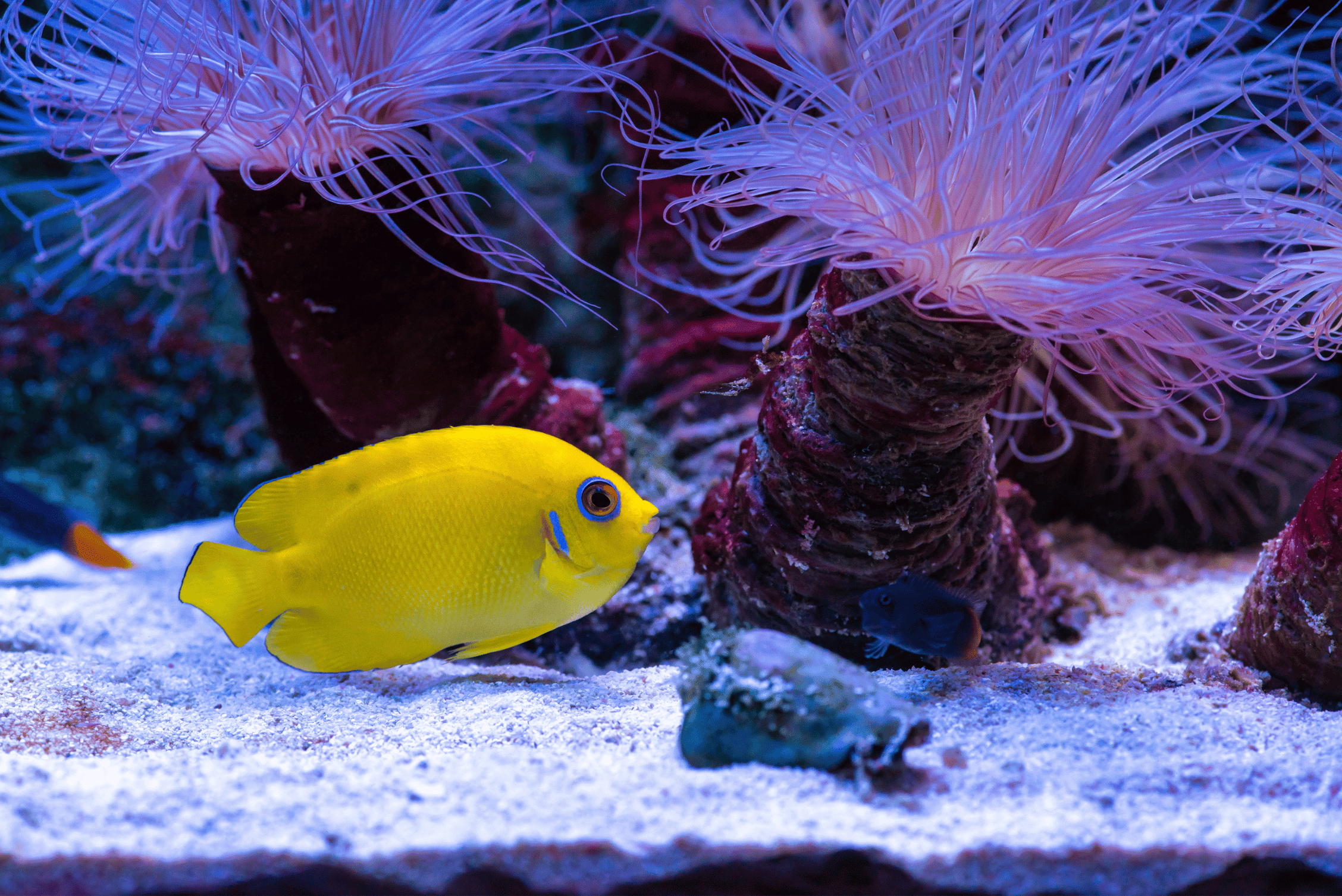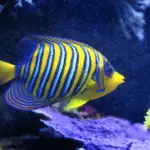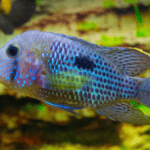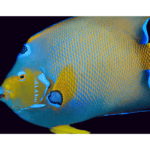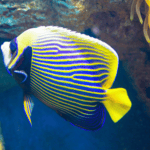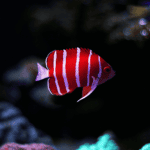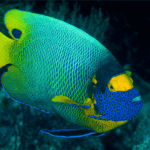The Lemonpeel Angelfish, scientifically known as Centropyge flavissima, is a vibrant species of marine angelfish highly coveted by aquarists for its electric yellow coloring and distinctive blue eye-ring. As inhabitants of the coral reefs in the Pacific and Indian Oceans, these angelfish bring a splash of color and dynamism to their natural habitat. Renowned for their social behavior and compatibility with other reef dwellers, they are both a challenge and a delight to maintain in a home aquarium.
Understanding the diet and feeding habits of the Lemonpeel Angelfish is vital for their care in captivity. They are omnivorous creatures that in the wild, graze on algae, as well as sponges and tunicates. In the aquarium, they require a varied diet rich in vitamins and nutrients to stay healthy. Additionally, aquarium care is fundamental for these sensitive species. To thrive, they need a well-established tank replicating their natural environment, with attention to water quality, temperature, and space for swimming and hiding.
Key Takeaways
- The Lemonpeel Angelfish is a brightly-colored species popular among aquarium enthusiasts.
- A varied diet and a well-maintained aquarium are crucial for their health in captivity.
- They are sociable with other reef species, making them a compatible choice for community tanks.
Natural Habitat and Distribution
Lemonpeel Angelfish are primarily found in the warm, subtropical waters of the Indo-Pacific region. We observe their preference for specific environments that ensure their survival and well-being.
Habitat Specifics
These angelfish favor seaward reefs where they can be typically spotted at depths between 1 and 25 meters. Their preferred habitat is rich in coral and algae, which provides both shelter and sustenance. We find them around patches of live coral, which is crucial for their territorial and breeding behaviors.
Global Distribution
Lemonpeel Angelfish have a wide but specific distribution. They originate from the Central Pacific, stretching to regions like the Great Barrier Reef off Australia, up to Christmas Island and reaching out to the Eastern boundaries near Easter Island. The table below summarizes their distribution:
| Region | Specific Areas Noted |
|---|---|
| Central Pacific | Common sightings |
| Australia | Great Barrier Reef |
| Indian Ocean | Christmas Island |
| Eastern Pacific | Easter Island (Less frequent) |
We note that these fish are not indigenous to areas outside the locations mentioned and are most prolific within the Central Pacific and areas around the Great Barrier Reef.
Physical Characteristics
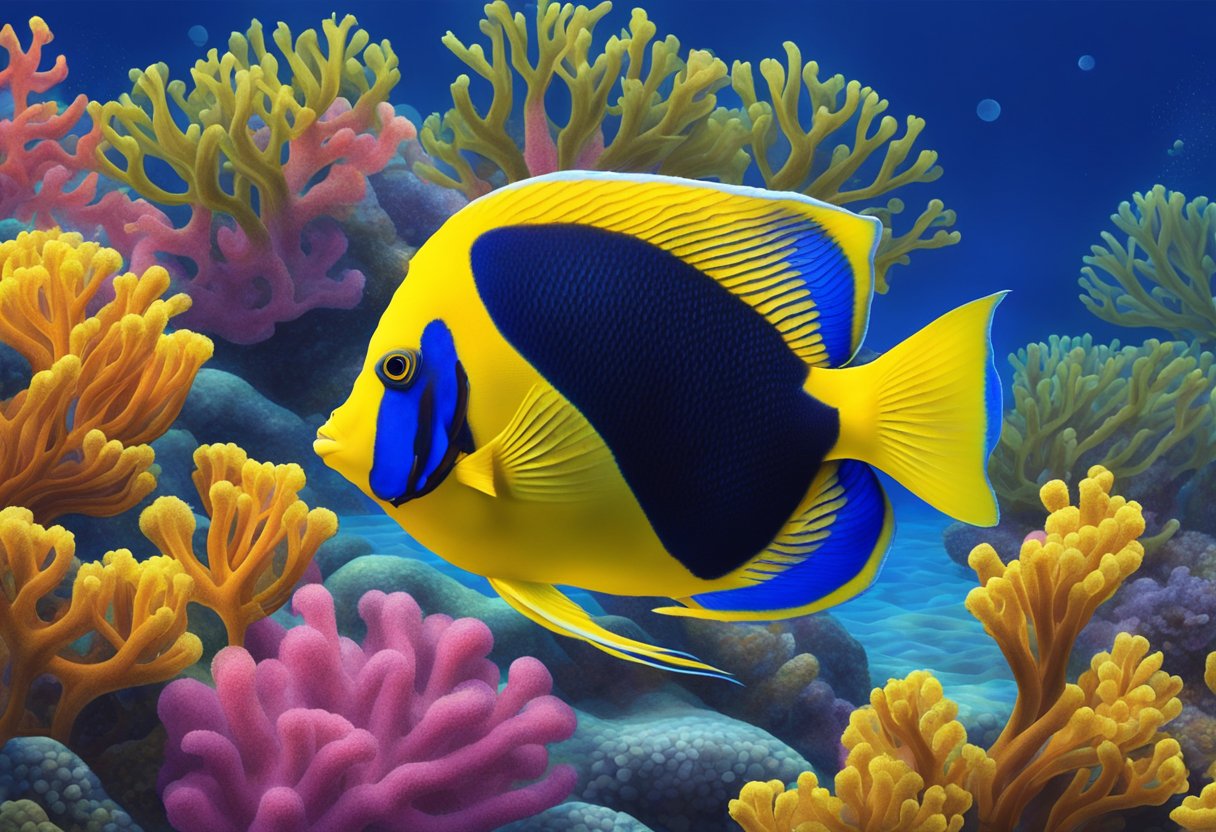
In this section, we explore the distinctive features of the Lemonpeel Angelfish that contribute to its recognition and appeal.
Coloration and Markings
The Lemonpeel Angelfish (Centropyge flavissima) is aptly named for its bright yellow body that closely resembles the color of a lemon. This vibrant yellow angelfish is also characterized by a distinct blue edge on its gill cover, also known as the operculum, and a compelling blue ring around the eyes. The vividness of its hues makes it a striking presence in any marine setup.
Anatomy and Size
As a species of dwarf angelfish, they are considered small in size when compared to other marine angelfish. We can typically observe an adult Lemonpeel Angelfish reaching up to 5.5 inches in length. This size classification makes them suitable for smaller marine aquariums. They display the traditional angelfish body shape with a laterally compressed form, a singular dorsal fin, and rounded caudal fins. Additionally, these fish possess a small anal fin which, like other marine ray-finned fish, aids in their swimming agility and stability in the water.
Behavior and Compatibility
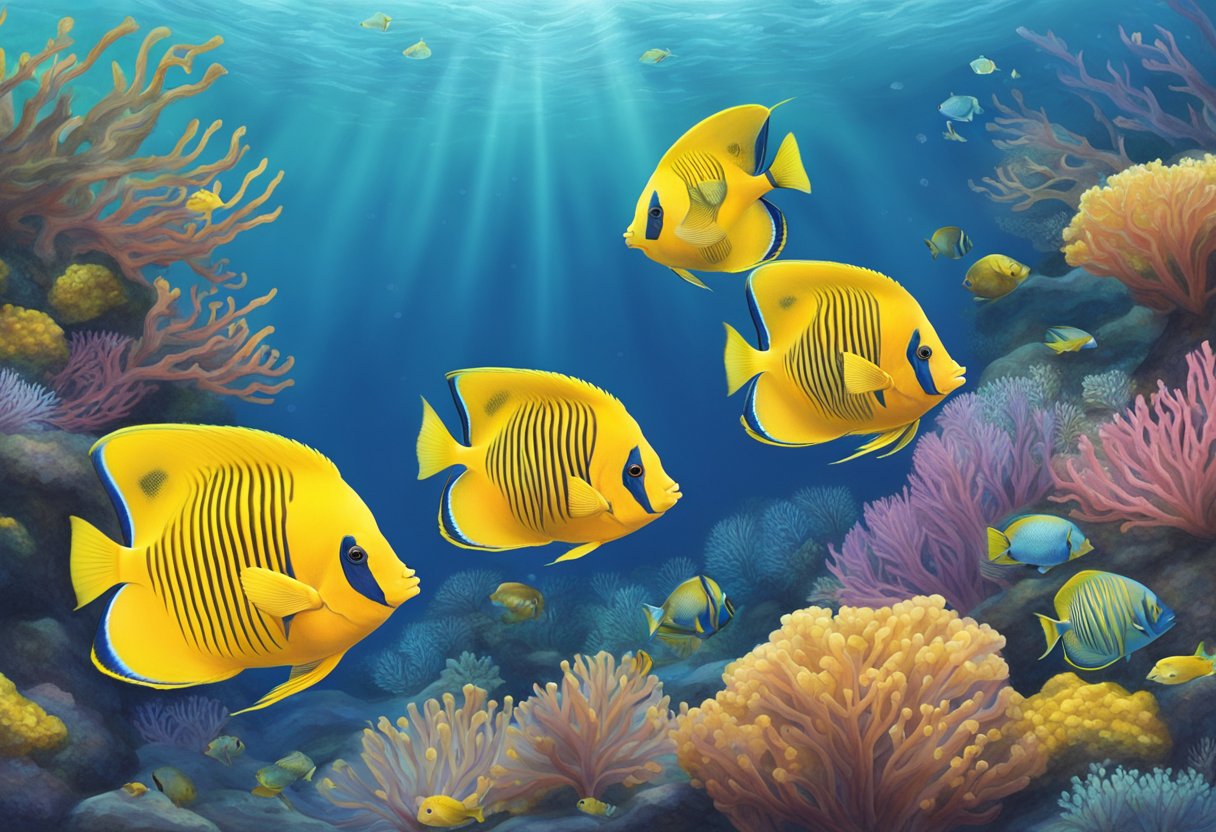
In discussing the Lemonpeel Angelfish’s behavior and compatibility, we must acknowledge their semi-aggressive temperament and tendencies towards territoriality, especially regarding live rock formations which they use as hiding places. Their behavior and interaction with tank mates are influenced by these characteristics.
Temperament
The Lemonpeel Angelfish, a vibrant member of the family Pomacanthidae, exhibits a bold and active temperament. They tend to establish territories within the aquarium, often around live rock structures that provide essential hiding spaces. Their behavior can be somewhat unpredictable as they may show aggression towards species with similar colors or body shapes. It’s essential to provide ample space for them to roam and establish personal boundaries to discourage aggressive tendencies.
- Aggression Level: Semi-aggressive
- Territorial: Yes, particularly around live rock
Tank Mate Selection
When selecting tank mates for the Lemonpeel Angelfish, we must choose species that can coexist with a semi-aggressive fish. It is advisable to avoid housing them with overly passive or smaller fish that could easily become targets. Similarly, fish that bear a resemblance to the Lemonpeel, in color or form, may provoke aggressive behavior due to territorial instincts.
- Compatible Tank Mates:
- Large, non-aggressive fish
- Fish with dissimilar coloration and body shape
- Incompatible Tank Mates:
- Small, docile species
- Fish with similar appearance to the Lemonpeel Angelfish
Providing the Lemonpeel Angelfish with an adequate environment and carefully selected tank mates can result in a harmonious aquarium.
Diet and Feeding
In caring for Lemonpeel Angelfish, ensuring a varied and nutritionally adequate diet is critical to their health and vibrancy.
Nutritional Requirements
We must provide Lemonpeel Angelfish with a mix of both animal and plant-based food sources. They are omnivores with a strong penchant for marine algae. A well-balanced diet for these fish should consist of:
- Marine algae: A staple that fulfills their herbivorous needs.
- Mysis shrimp: High in protein and essential fats.
- Brine shrimp: Often used as a food source, but less nutritious than mysis shrimp.
- Clams and shaved shrimp: Offer additional protein and mimic their natural feeding behaviors.
In captivity, Lemonpeel Angelfish thrive on processed foods that are spirulina enriched, as these provide a plant component to their diet that is rich in essential vitamins and minerals.
Feeding Habits
We find that Lemonpeel Angelfish adapt well to captive feeding schedules. They should be fed small amounts several times a day to mimic their natural foraging behavior, which includes:
- Grazing on algae: Throughout daylight hours on surfaces such as live rocks and tank walls.
- Consuming live foods: Such as brine shrimp, mysid shrimp, and clams, offering crucial nutrients.
Inclusion of seaweed, in particular, can be an excellent supplement to their diets, typically attached to a clip inside the aquarium. This method encourages foraging and provides enrichment.
Aquarium Care and Maintenance
In our experience, maintaining a Lemonpeel Angelfish in an aquarium requires attentiveness to its environment and health. We’ll discuss essential information on tank conditions and practices to keep these fish thriving.
Tank Setup
When setting up a tank, we consider size and water composition paramount. Lemonpeel Angelfish thrive in a saltwater environment. Here is a brief rundown of the key tank requirements:
- Tank Size: We recommend a minimum tank size of 55 gallons to provide ample space for swimming and territorial behavior.
- Water Parameters:
- Temperature: Should be maintained between 72°F and 82°F (22°C to 28°C) for optimal comfort.
- pH Levels: Aim for a pH range of 8.1 to 8.4.
- Specific Gravity: This should be between 1.021 and 1.025 to mimic natural seawater.
Water conditions should be stable, with regular monitoring and adjustments as necessary. We often use testing kits to monitor these parameters. Frequent water changes are essential to managing nitrate levels and preventing the buildup of harmful contaminants.
Health and Well-being
Caring for a Lemonpeel Angelfish involves more than just managing water conditions; it involves monitoring their health and dietary needs.
Diet: Lemonpeel Angelfish require a varied diet comprising marine algae, mysis shrimp, and high-quality angelfish preparations. We suggest enriching their diet with spirulina to enhance color and vitality.
Reef Tank Compatibility: They are moderately safe to keep in a reef tank but may nip at soft corals and invertebrates. Thus, we must choose tank mates and reef components carefully.
Fish Disease: Vigilance is key to early detection of common diseases. Quarantine new additions to prevent the spread of illness. Look for signs of distress or disease like white spots, rapid breathing, or lethargy.
Good care level practices involve quarantine tanks for new or sick fish to prevent the spread of disease. We always ensure to avoid copper-based medications in the main tank, as they can harm Lemonpeel Angelfish and other invertebrates. With the proper care and maintenance, Lemonpeel Angelfish can be a healthy and vibrant addition to our aquariums.
Frequently Asked Questions
In this section, we tackle some of the most common inquiries regarding Lemonpeel Angelfish, providing clarity on identification, compatibility, dietary needs, growth comparisons, tank requirements, and behavior in relation to other dwarf angelfish species.
How can you differentiate between a true Lemonpeel Angelfish and a false one?
A true Lemonpeel Angelfish, Centropyge flavissima, exhibits a uniform bright yellow hue and a distinct blue ring around each eye and the edges of its gills and fins. The false Lemonpeel Angelfish, which is often the Juvenile Half-Black Angelfish, Centropyge vrolikii, lacks the blue ring around the eyes and shows a darker splotch on its sides as it matures.
Are Lemonpeel Angelfish considered reef safe or do they pose risks to corals?
Lemonpeel Angelfish are not strictly reef safe as they have been known to nibble on soft and stony corals, clam mantles, and even tridacnid clam. We recommend caution if considering them for a reef tank with these invertebrates.
What dietary needs should be considered when feeding Lemonpeel Angelfish?
When feeding Lemonpeel Angelfish, it is important to provide a varied diet that includes marine algae, spirulina, and mysis shrimp to satisfy their omnivorous appetite. They should be fed small amounts two to three times daily.
How does the size and growth of Lemonpeel Angelfish compare to other marine angelfish species?
We advise that Lemonpeel Angelfish typically grow to about 5 inches in the wild, which is small compared to larger angelfish species. In an aquarium setting, they may reach this size or remain slightly smaller, depending on the environment and care provided.
What are the specific tank requirements for Lemonpeel Angelfish in nano reef systems?
For Lemonpeel Angelfish in nano reef systems, a minimum of a 30-gallon tank is recommended. These fish require plenty of live rock and hiding places to mimic their natural environment and help them feel secure.
Which dwarf angelfish species are known for being the most peaceful in a saltwater aquarium setting?
Among the dwarf angelfish, the Cherub Angelfish, Centropyge argi, and the Pygmy Angelfish, Centropyge argi, are known for their relatively peaceful demeanor in saltwater aquariums, making them suitable for a community tank with other non-aggressive fish.
